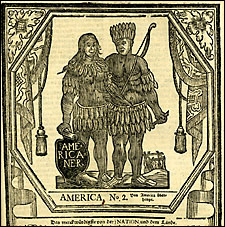Tozzer fetes quarter-millionth volume
Exhibit celebrates literature of anthropology and shows off Tozzer’s latest acquisition

Tozzer Library reached a milestone in its 140-year history last month with the acquisition of the quarter-millionth volume to its collection of anthropology, archaeology, and ethnology materials. To mark the occasion, the library is hosting “Codices, Chimpanzees, and Curanderas: From the Field to the Shelf,” an exhibition to celebrate the literature of anthropology and to display Tozzer’s newest book.
Curator Janet Steins, associate librarian for technical services and collections at Tozzer, began developing the collection with a question posed to Harvard anthropologists (faculty as well as graduates): What is the one book that most significantly affected your research or the field? She requested a three- to four-sentence response, and they came. Steins found the texts fell into three traditional anthropological categories and from that the exhibition name was born: codices (archaeology), chimpanzees (biological anthropology), and curanderas (social anthropology – “curandera” means healer in Spanish and refers to a witch doctor or shaman).
“What people have been sharing about why these books are noteworthy is wonderful,” says Steins. “Their choices range from the very scholarly to the very specialized to classic works like those by Claude Levi-Strauss, Margaret Mead, and so on. Of course, a few say it’s impossible to pick one book.”
Some responses are personal, others more academic. Peter Bogucki, Ph.D. ’81, said of “The Early Mesoamerican Village,” edited by Kent V. Flannery, “This book not only presented me with a fresh way of looking at the archaeological materials I was excavating in Poland but also provided an example of sensible, nonpolemical, solid scholarship that was a welcome respite from the theoretical and methodological disputes of the day, which, in hindsight, did not amount to much. For a graduate student, it was crucial to realize that one could make an impact on the field without having to be disagreeable and contentious.”
David Plath, Ph.D. ’62, wrote, “On active duty in the Far East during the Korean War, inundated by Cold War propaganda from all sides, I wanted a way to find a vision of the human potential not crimped by the petty parochial preferences of nation, creed, race, or ideology. … “Mirror for Man” [by Clyde Kluckhohn] didn’t offer answers, but it offered the exciting possibility that answers can be found.”
Copies of many of the chosen books, each accompanied by the anthropologist’s explanation of its significance, are on display along with a selection of Tozzer’s other treasures including the rare, newly acquired 250,000th volume. This book – “Neu-Eröffnetes Amphi-Theatrum” for short, since the full, overly descriptive title runs to more than 70 words – formed part three of a five-volume set. Translated to “The Newly Opened Amphitheater,” it was published in 1723 when an anonymous German decided to educate his fellow Europeans by writing a book about indigenous Americans: their appearance, houses, customs, religions, wars, general lifestyle, and more.
“Although this man had never crossed the Atlantic or seen a Native American,” says Steins, “he wrote a chapter on each of a number of peoples and paired them with woodcut prints of the indigenous peoples. Some are accurate, some are not so accurate.”
Aptly, the exhibition also displays the library’s very first item, “Kaladlit okalluktualliai: kalâdlisut kablunâtudlo,” acquired in 1870 when Tozzer was known as the Peabody Museum Library. This 1859 book, from a four-volume set of Eskimo legends, features stories in both Greenlandic/Eskimo and Danish with illustrations made by native Greenlanders.
Several objects lent by the Peabody Museum give context to the books. Among these are wooden dolls from Greenland dressed in fur, hide, and sinew costumes, and a ceramic vessel from Viru Valley in Peru collected by Harvard professor and anthropologist William Curtis Farabee on a South American expedition in the early 20th century.
‘Codices, Chimpanzees, and Curanderas: From the Field to the Shelf’ runs through March 31 in the Tozzer Library Gallery, open Monday-Thursday, 9 a.m.-9 p.m., Friday 9 a.m.-5 p.m., and weekends 1-5 p.m. during the academic term.




